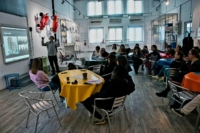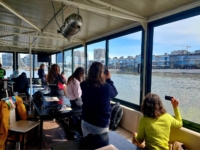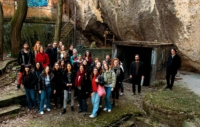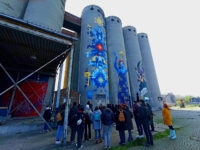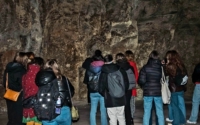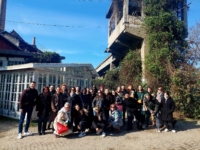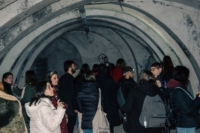WatHerMines ISP Serbia

In the framework of the European project “Water and Mines”, twenty students, five professors, and stakeholders from Sweden, Italy, Belgium, and Serbia participated in the second Intensive Study Program (ISP) in Belgrade, Serbia, which ran from March 27 to March 31, 2023.
The nonprofit organization Centar za urbani razvoj (Urban Development Center UDC) with a location in Belgrade organized and hosted the event. One of several EU initiatives that promote international cooperation with universities, educational institutions, and civic groups around Europe is the comprehensive “Erasmus+” program, which includes the project “Mines and Water”, dedicated to Europe’s industrial heritage.
The “Mines and Water” project looks into how urban development, cultural legacy, and visual perception of post-mining and other industrial operations in Europe might be influenced by underground and aquatic surroundings.
HOGSKOLAN DALARNA (Sweden), UNIVERSITA’ DEGLI STUDI DI BERGAMO (Italy), Haute Ecole Provinciale de Hainaut – Condorcet (Belgium) and Centar za urbani razvoj UDC (Serbia), are partners in the “Mines and Water” project.
Students, professors, and specialists engaged in workshops on alternate applications and interpretations of European industrial legacy over the course of five intensive study days in Belgrade. They were touring and investigating prominent examples of Belgrade’s industrial heritage, such as the old sugar factory “Šećerana”, which was converted into a charming theatre, the thermal power plant “Snaga i Svetlost”, and the large grain tanks “Silosi” which are on the river bank and are converted into an alternative cultural centre. Taking a boat tour on the Sava and Danube rivers from Ada Ciganlija to the old section of Belgrade Dorćol provided a unique view of the cityscape, development, and historical and industrial history of the city.
Tašmajdan cave, one of Belgrade’s biggest underground complexes, was the program’s primary goal as a case study for the exploration and presentation of industrial heritage. Natural caverns that are millions of years old from the Miocene epoch, an ancient Roman quarry, medieval passageways, and Nazi bunkers make up this complex of separate structures. The Tašmajdan complex, which is located beneath one of the major city parks, is the best representation of Belgrade’s development and historical past. These stones were used to construct the medieval fortification and the Roman fortress of Singidunum, the forerunner of Belgrade. During the Ottoman and Austrian eras, that stone was still exploited. This complex was transformed into a saltpetre storage facility and a gunpowder “factory” in the late nineteenth century during the fast industrialisation of the fledgling Kingdom of Serbia. Tašmajdan served as the main Nazi bunker during World War Two. These days, although it has significant tourist potential as a priceless natural and cultural-historical protected region in the centre of Belgrade, this area is currently largely neglected, sealed, and inaccessible to visitors. According to the Urban Development Center’s organizers, ISP attendees in Belgrade had the rare opportunity to visit the cave complex and get a taste of the city’s authentic natural and industrial heritage. For all program participants, this tour was a genuine experience and left a lasting effect.
Further, “The Museum of Science and Technology” hosted an interactive workshop with a guided tour, where students learned how to produce a digital product – a virtual tour map dedicated to the little-known history of Belgrade in the city centre, Tašmajdan cave.
Without Nikola Tesla, a Serbian scientist, engineer, inventor, and futurist best recognized for his contributions to the creation of the modern alternating current (AC) electrical delivery system, the world would not exist as we know it today. The ISP visit to the “Nikola Tesla Museum” was therefore a crucial opportunity for all participants to gain both personal and educational experience about industrial heritage.
Students, teachers, and professionals in Belgrade learnt a lot from one another during the intensive study program’s five days while also realizing how much our shared industrial past actually unites us and forces us to protect it and learn more about it.

